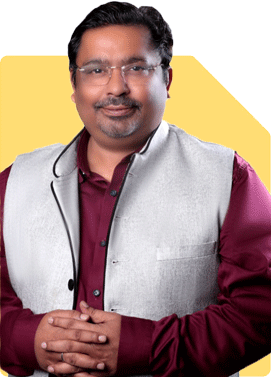i want to invest 6 lakh rupees in debt fund , which are safest debt fund to invest
Ans: It is great that you are planning thoughtfully. As a Certified Financial Planner, I’ll present a 360-degree assessment of what constitutes the “safest” debt fund choices and how to approach your investment, rather than naming specific schemes. That way you can make a well-informed decision.
» Understanding what “safe” means in debt funds
When we speak of safety in debt funds, it means different things: capital preservation, limited volatility, high quality underlying assets, short durations, strong liquidity. Debt funds are not completely risk-free — they carry credit risk (issuer may default), interest rate risk (bond prices change), liquidity risk. You deserve to know these risks.
– The underlying securities in the fund should have high credit rating (for example government or top-corporate bonds).
– The duration (average maturity) should be appropriate for your horizon. Shorter duration tends to reduce rate-sensitivity.
– The fund manager’s quality, investment process and fund house reputation matter.
– Expense ratio, portfolio quality, transparency are important.
– The fund category should match your investment horizon and risk appetite.
So when you say “safest”, you are really saying you prefer minimal downside and moderate return, rather than go for high return but high risk. That is good.
» Establishing your investment objective & horizon
Before selecting a debt fund, you need clarity on what you are seeking. As your CFP, I ask:
– What is your time horizon for the Rs. 6 lakh? Is it 1-3 years, 3-5 years or longer?
– Are you seeking income (regular pay-out) or capital preservation with growth?
– How do you view risk: Are you willing to accept small fluctuations for higher returns, or do you want almost no fluctuations?
– How does this investment fit within your broader portfolio (equity / real-estate / other assets)?
– Do you have an emergency fund separately, or is part of this money acting as emergency fund?
If your horizon is short (say under 2-3 years), then you’ll lean towards ultra-short / short duration debt funds. If horizon is medium (3-5 years or slightly more) you might accept some moderate duration. If very long, you might consider more duration but that increases risk.
» Categories of debt funds and relative safety
Here’s how different debt fund categories stack up in terms of safety (lower risk) to relatively higher risk (still debt, but more risk):
– Liquid / overnight funds: invest in very short maturity instruments. They carry lowest interest-rate risk, lowest credit risk (usually high quality). Good for parking funds temporarily.
– Ultra-short / low-duration funds: slightly higher maturity than overnight. Still low risk relative to many. Suitable if you want modest returns and limited risk.
– Short-duration / short-term funds: moderate maturity (say 1-3 years). A bit more sensitive to interest rate changes, but still relatively safe.
– Banking & PSU debt funds / corporate bond funds: here the underlying quality of corporates matters a lot. If high credit rating and stable economy, these can be safeish, but they carry credit risk.
– Gilt / government bond funds (medium to long duration): very safe credit risk (government backing) but long maturity means higher interest-rate risk (if rates go up, your value drops).
– Credit risk funds / dynamic bond funds / long-duration corporate funds: higher risk than above because they take more credit or duration risk. These are less “safest”.
For your objective (safest investment of Rs. 6 lakh), you would lean towards the first few categories (liquid, ultra-short, low-duration, short-duration) rather than credit risk or long duration categories.
» Taxation considerations for debt funds
Given you are investing in a debt mutual fund (rather than equity oriented), you need to remember taxation as per your slab rate. For debt funds: both short-term and long-term capital gains are taxed according to your income tax slab.
So if you are in a high tax bracket, your effective return after tax will be lower. Therefore choosing a fund with lower risk but also lower returns may make more sense, because the incremental returns from higher-risk debt may get eaten up by tax and risk.
» Why actively managed debt funds make sense vs index funds / ETFs
You specifically asked to invest in a debt fund and avoid index funds/ETFs. Good call. Here’s why for debt funds:
– Index funds/ETFs are generally designed for equities or broad bond indices. For Indian retail debt fund investing, actively managed funds give the fund manager discretion to adjust credit quality, duration and respond to market conditions.
– In debt markets, credit risk, liquidity risk, interest rate cycles matter a lot. An index fund cannot manage credit risk actively the same way.
– Actively managed debt funds allow selective avoidance of weak credits or sectors, whereas an index?linked product may carry all.
– For someone seeking safety, you want the flexibility the fund manager can provide.
Thus, an actively managed debt fund (via regular plan) managed by a fund house and selected by your MFD/Certified Financial Planner is preferable.
» Why choose regular plans (via your MFD/CFP) rather than direct plans
Since you are going through a Certified Financial Planner, you should consider regular plans rather than direct plans if you want advisor support. Here’s why:
– Regular plans provide you access to your MFD/CFP’s advice, regular review, and portfolio monitoring.
– For the goal of investing Rs. 6 lakh, guidance on rebalancing, switching if needed, is valuable.
– Direct plans give slightly lower expense ratio, but if you lack time/interest in monitoring and selecting funds, you might lose out on advisory value.
– Particularly for debt funds (which may seem simple), professional oversight helps avoid pitfalls (credit downgrades, fund category mismatches, interest rate mis-timing).
Therefore using a regular plan via your CFP gives you the benefit of active oversight with the fund’s active management.
» Key assessment criteria to pick the safest debt fund
When evaluating which debt fund to choose, look at the following criteria (and you can ask your CFP to filter):
– Credit quality of underlying portfolio: Look for high ratings (AAA, AA). Avoid funds which hold many lower-rated credits.
– Average maturity / duration: Lower duration reduces interest rate risk. For safest, shorter duration is better.
– Fund house reputation & track record: Stable fund house, good internal risk management, experienced fund manager.
– Expense ratio: Lower expense leaves more net return for you.
– Liquidity & exit load: You may want the option to exit smoothly if needed.
– Fund size / AUM: Larger funds often have better liquidity and risk control, though not always guarantee safety.
– Risk metrics: Look at volatility, draw-down history, how the fund performed during interest rate rise cycles.
– Fund category clarity: Make sure the mandate matches what you intend (e.g., an ultra-short vs long duration).
– Tax implications and your net return: Since your tax slab affects return, consider after-tax expected yield.
– Your horizon and objective: Align fund’s horizon/mandate with your Rs. 6 lakh use-case.
» Suggested portfolio stance for your Rs. 6 lakh
Given your risk-aversion (you said safest) and amount (Rs. 6 lakh) I would recommend a split based on horizon:
If you expect to use this money in 6-12 months (short horizon): allocate majority to ultra-short / liquid debt funds.
If horizon is 1-3 years: you can allocate some amount to short-duration debt funds (slightly higher maturity) and rest to ultra-short.
If horizon is 3-5 years or slightly more: you may allocate a portion to short-duration or banking & PSU debt funds, but still keep a large portion in low-duration to keep safety intact.
For instance: you might place about 70-80% in ultra-short or low-duration debt, and 20-30% in short-duration banking & PSU debt fund, subject to your comfort. This gives you modest return potential while keeping risk low.
» What to watch out for (risks, pitfalls)
Even with “safe” debt funds, you must remain alert:
– Credit risk: If the fund holds corporate bonds that are downgraded or default, returns can suffer. Even highly-rated corporates can face stress.
– Interest rate risk: If you hold longer maturity funds, a rate rise can cause NAV drop. That is why shorter maturity is safer for you.
– Liquidity risk: Some debt funds may hold illiquid papers; in stressed markets, you may face exit issues.
– Hidden costs / expenses: Higher expense ratio reduces net return.
– Tax-adjusted return: After tax, your net return could be modest.
– Inflation risk: Even if principal is preserved, if your return is lower than inflation, you lose real value.
– Category drift: A fund labelled “short duration” may shift mandate over time; continuous monitoring necessary.
– Over-concentration: Avoid putting all Rs. 6 lakh into one fund; diversification across one or two safe categories helps.
» Why this investment complements your 360-degree portfolio
Your investment in a safe debt fund for Rs. 6 lakh provides multiple benefits:
– It acts as ballast in your portfolio — stable income/return source while your other investments (say equities) may fluctuate.
– It helps in risk management — by reducing overall portfolio volatility.
– It provides liquidity: you can access funds more easily than tying up in long-term lock-in investments.
– It gives you an alternative to bank fixed deposits (FDs) / savings accounts, with potentially higher returns, while keeping risk moderate. Indeed, many debt funds are now outperforming FDs.
– It ensures that when you need the money (say for a goal), you have a relatively stable investment rather than volatile assets.
» Action steps you and your CFP should take
– Clarify your exact goal for this Rs. 6 lakh (what, when, how much).
– Review your current portfolio: do you already have other debt/ fixed income exposures? Any overlapping risk?
– With your CFP, filter for debt fund categories with high credit quality and short/low duration that match your horizon.
– Assess expense ratios, fund house, manager track record, portfolio holdings of shortlisted funds.
– Decide allocation: how much to ultra-short vs short-duration, and if you want any banking & PSU debt exposure.
– Choose regular plan via your CFP/MFD so you get advisory support, not just direct plan.
– Continue to monitor the investment at least annually: check credit rating changes, interest rate environment, fund performance vs peers and benchmarks.
– Keep contingency for exit or switching if market conditions change (say interest rates rise sharply).
– Keep the Rs. 6 lakh investment aligned with your liquidity and emergency buffer – don’t lock all your reserves there.
» Final Insights
It’s really positive that you are prioritising safety and being deliberate. A well-selected debt fund investment of Rs. 6 lakh can serve you well, provided you focus on shorter duration, high credit quality, actively managed funds, and tie it to your objective and horizon. As your Certified Financial Planner, I encourage you to partner closely with me or your CFP/MFD to pick the right fund, monitor it, and integrate it within your broader financial plan. With that, you’re positioning yourself for both stability and disciplined investing.
Best Regards,
K. Ramalingam, MBA, CFP,
Chief Financial Planner,
www.holisticinvestment.in
https://www.youtube.com/@HolisticInvestment


























